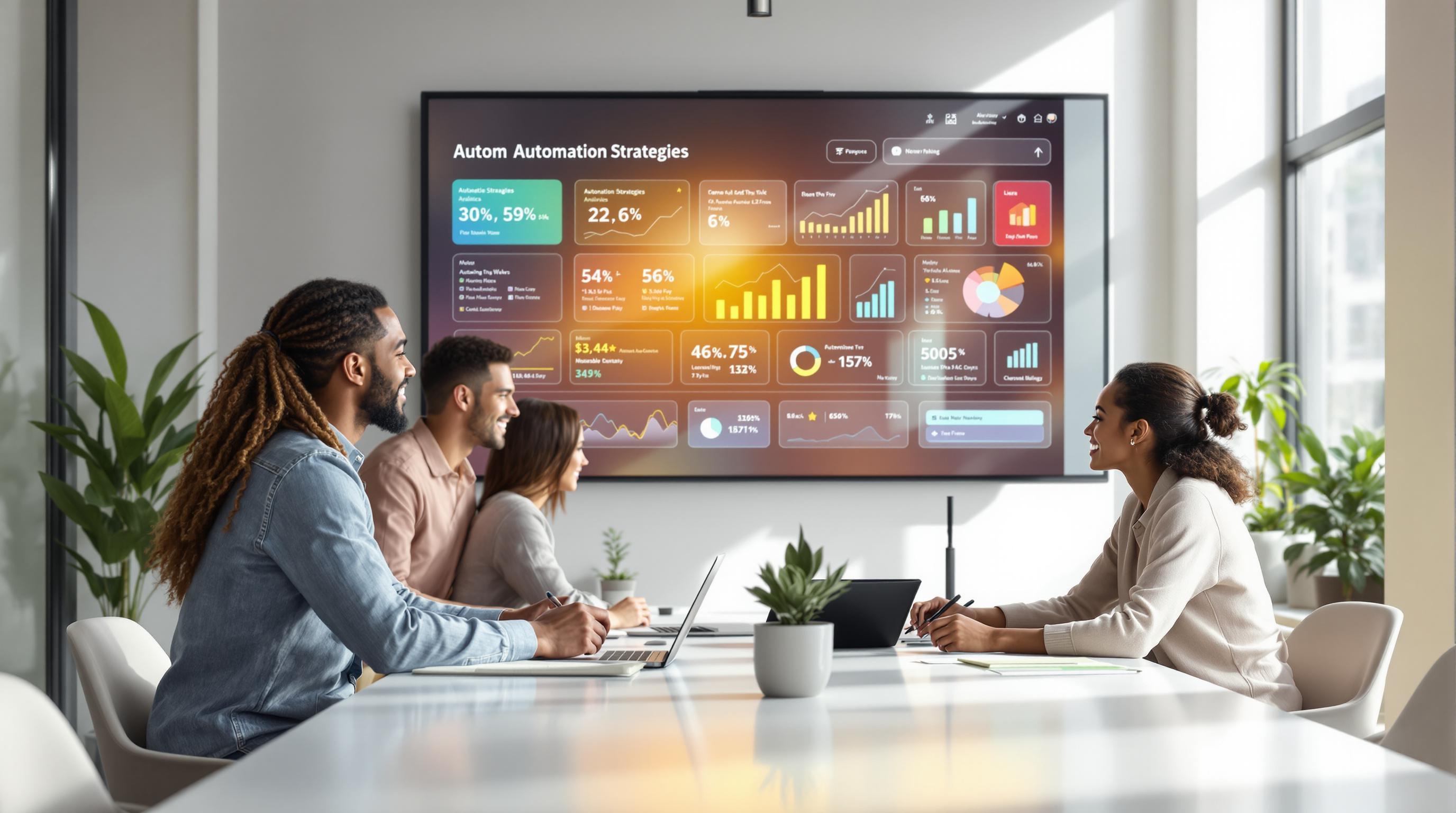- SMS: 98% open rate, fast response (under 3 minutes), great for urgent updates but higher cost per message.
- Email: 20-28% open rate, ROI of $42 per $1 spent, ideal for detailed content and long-term engagement.
- Key Difference: SMS excels in immediacy and engagement; email is better for nurturing relationships and providing in-depth information.
Quick Comparison
| Aspect | SMS Marketing | Email Marketing |
|---|---|---|
| Open Rate | 98% | 20-28% |
| Click-Through Rate | 6-19% | 1.7-3.8% |
| ROI | $10 per $1 spent | $42 per $1 spent |
| Best Use Cases | Urgent alerts, reminders | Newsletters, detailed content |
| Response Time | Under 3 minutes | 90+ minutes |
Key Insight: Use SMS for time-sensitive actions and email for building relationships. Combining both can maximize results.
SMS vs. Email Marketing: Which Is Right for Your Business?
SMS vs Email: Key Metrics Breakdown
Let’s take a closer look at the numbers that differentiate SMS and email marketing. These metrics can guide you in deciding which channel aligns better with your marketing goals.
Open Rates: SMS vs Email
Text messages tend to grab attention quickly since they land directly in the user’s main messaging inbox. This immediacy often makes SMS feel more personal and urgent. On the other hand, emails can get lost in promotional folders or spam, reducing their visibility.
High open rates for SMS highlight its visibility advantage, while email relies more on its ability to engage users over time.
Engagement and Click Rates
Both SMS and email show distinct engagement patterns, which are reflected in the metrics below:
| Metric | SMS Marketing | Email Marketing |
|---|---|---|
| Click-Through Rate | 6-19% | 1.7-3.8% |
| Conversion Rate | ~29% | 15-17% |
| Response Time | Under 3 minutes | 90+ minutes |
| Average ROI | $10 per $1 spent | $42 per $1 spent |
SMS is great for driving immediate actions, like flash sales or time-sensitive updates. Email, however, shines in delivering long-term value through higher ROI and nurturing customer relationships over time.
Deliverability of SMS and Email
Deliverability is another area where these two channels differ significantly. SMS has a 97% deliverability rate [2], while email ranges between 80-90% [5].
Why SMS Stands Out:
- Messages go straight to mobile devices, ensuring higher reach.
- Minimal technical issues and spam filtering.
- Fewer barriers to delivery.
Challenges with Email:
- Spam filters and promotional tagging reduce visibility.
- Multiple technical hurdles, like server issues, can cause delivery failures.
SMS’s direct approach ensures it reaches recipients almost instantly, with fewer obstacles. Email, despite facing more deliverability challenges, compensates by offering richer content and fostering longer-term customer engagement [2].
Choosing SMS or Email for Different Goals
When deciding between SMS and email marketing, it's important to match the channel to your campaign's purpose and the type of message you want to send. Here’s a breakdown of when each works best.
Using SMS for Urgent Messages
SMS marketing boasts a 98% open rate and an average response time of under 3 minutes [2]. This makes it perfect for time-sensitive updates like flash sales, appointment reminders, or service alerts. If your goal is to prompt quick action, SMS is the way to go.
Using Email for Detailed Content
Email shines when you need to share detailed or visually appealing content. With its flexible design and impressive ROI of $42 for every $1 spent [2], it’s ideal for:
| Content Type | Benefits | Best Use Cases |
|---|---|---|
| Newsletters | Multi-topic updates, rich visuals | Monthly updates, industry news |
| Product Launches | Images, detailed descriptions | Announcing new features or products |
| Educational Content | Step-by-step guides, tutorials | How-to guides, learning resources |
When your goal is to inform or build stronger connections, email is hard to beat.
Comparing Costs and ROI
SMS delivers high engagement with a 29% conversion rate [3], but it comes with higher per-message costs. On the other hand, email is more budget-friendly and offers a strong ROI of $42 for every $1 spent [2].
- SMS: Best for urgent, high-priority messages where immediate engagement matters. While it costs more per message, its high open and click-through rates make it effective for short-term goals.
- Email: Ideal for frequent communication and relationship-building. Its lower costs and strong ROI make it a go-to for broader, ongoing campaigns.
sbb-itb-f031672
Using SMS and Email Together
Smart marketers combine SMS and email to amplify campaign results, taking advantage of what each channel does best.
Building a Multi-Channel Marketing Plan
To make the most of SMS and email, businesses need a clear strategy that integrates both channels. Here's how these tools can work together:
| Campaign Phase | SMS Role | Email Role | Integration Strategy |
|---|---|---|---|
| Initial Contact | Quick promotional alert | Detailed offer explanation | Send SMS first, then follow up with email within 24 hours |
| Nurturing | Time-sensitive reminders | Educational content | Use SMS for urgent updates, email for deeper engagement |
| Conversion | Urgent CTAs | Comprehensive product info | Use SMS to drive traffic to a detailed email |
| Follow-up | Immediate feedback requests | In-depth surveys | Collect quick responses via SMS, expand details in email |
Consistency is essential. For instance, when introducing a new product, you could send a brief announcement via SMS, then follow it with a more detailed email.
Examples of Successful SMS and Email Campaigns
A leading e-commerce company demonstrated the power of combining these channels:
"Our data shows that businesses using both SMS and email see a 29% conversion rate through SMS messaging while maintaining email's impressive ROI of $42 for every $1 spent [3][2]. This dual-channel approach maximizes both immediate engagement and long-term customer value."
For time-sensitive promotions, many businesses rely on a three-step method:
- Email preview: Creates anticipation
- SMS alert: Encourages immediate action
- Email recap: Keeps the audience engaged
This method blends SMS's speed with email's detailed messaging. Tools like HighLevel make it easier to integrate and automate SMS and email campaigns, helping marketers save time and improve results.
Conclusion: Picking the Right Channel for Your Goals
Choosing between SMS and email marketing isn't about deciding which is better overall - it's about finding the right fit for your specific needs. SMS shines when you need instant interaction, boasting a 98% open rate, while email is a powerhouse for building long-term engagement and delivering detailed content [2][3].
Your decision should depend on your campaign's goals and how your audience prefers to engage. Here are some examples:
| Campaign Goal | Best Channel | Reason |
|---|---|---|
| Urgent Updates | SMS | 90% of messages read in 3 minutes |
| Brand Education | Perfect for in-depth content and visuals | |
| Flash Sales | SMS | 29% conversion rate |
| Customer Nurturing | Ideal for building relationships |
Think about who you’re targeting and how they consume content. For example, if your audience is mostly busy professionals who need quick updates, SMS may be your go-to. On the other hand, if your goal is to educate and nurture leads with detailed content, email is the better option.
Cost is another factor, but it shouldn't dominate your decision. SMS tends to cost more per message, but its high engagement rates can make it worth the expense for urgent campaigns. Email, with its lower costs, is great for frequent communication and content-heavy messaging.
In many cases, combining both channels can deliver the best results. Use SMS for time-sensitive alerts and email for more detailed follow-ups. Tools like HighLevel can simplify managing both, helping you create a seamless strategy that plays to each channel's strengths.
The real key is personalization and timing. Keep testing, analyzing, and refining your approach based on how your audience responds. Let your specific marketing goals, not general trends, guide your strategy.
FAQs
Which is more effective: SMS or email marketing?
SMS boasts a 98% open rate and a 90-second average response time, making it perfect for immediate engagement. On the other hand, email, accessed by 85% of users on mobile, is better suited for delivering detailed content [1][2].
The choice depends on your campaign goals:
When to Use SMS:
- Urgent alerts or flash sales
- Appointment reminders
- Collecting quick feedback
When to Use Email:
- Sharing detailed content
- Running visually appealing campaigns
- Building long-term customer relationships
- Achieving a higher ROI ($42 per $1 spent compared to SMS's $10) [2][1]
HighLevel’s automation tools simplify managing both channels, ensuring smooth coordination. For example, you can send urgent updates via SMS and follow up with detailed information through email. This approach maximizes engagement by playing to each channel's strengths.
For best results, use SMS for time-sensitive actions and email for nurturing relationships or delivering in-depth content. Combining both methods can help address the limitations of each.
"The effectiveness of SMS and email marketing depends on the specific marketing goals and audience preferences. Understanding when to use each channel and how to combine them is crucial for maximizing ROI and engagement" [4].
Factors to Consider When Choosing:
- Is the message time-sensitive?
- How complex is the content?
- What does your audience prefer?
- What is your budget?
- What are your campaign goals?
Using HighLevel's tools, marketers can create a balanced strategy, driving immediate action with SMS while using email for deeper engagement and long-term relationship building.



